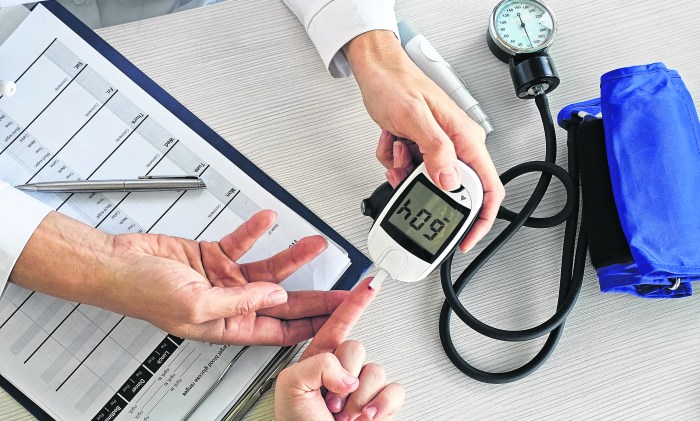Schools across the state will soon have to implement bell-to-bell cell phone bans for their students as part of legislation recently approved in New York State’s 2026 budget.
Schools have until September to institute policies ensuring compliance with the new state requirement.
But one Long Island school district already has a policy in place and says there is more to look forward to with the new policy than dread.
“[Teachers] couldn’t wait to get back to their classrooms and just enjoy talking to children again without having them distracted,” Locust Valley Superintendent Kristen Turnow said.
The state’s policy is being enforced for grades K-12 at all public schools, charter schools and Boards of Cooperative Educational Services.
“I know our young people succeed when they’re learning and growing, not clicking and scrolling — and that’s why New York continues to lead the nation on protecting our kids in the digital age,” Gov. Kathy Hochul said.
The policy also requires districts to develop an alternative method for students to contact their parents or guardians and involve students, parents, and teachers in determining how the district will implement this policy.
While the state is enacting this new policy, school districts will be able to determine the method by which they enforce it.
Set aside in the state budget is also $13.5 million to assist schools in meeting this new standard.
Turnow said there can often be harmful effects of student cell phone use, including impacts on student mental health and safety, and diminished student engagement in classrooms.
“It’s not a phone, you’re giving a child access to everything in the world,” Turnow said. “Many parents struggle with how to really lock down those phones. So our children are being exposed to highly inappropriate content at a very young age.”
She said the policy’s intent is to re-engage students academically and give them the chance to be children again.
“You get to be an adult for your whole life. You’re a kid for a very short time period,” Turnow said.
Turnow said she hopes the policy will have positive impacts, such as aiding students in making decisions without their phones, bolstering their self-confidence, and promoting engagement with their peers.
The intent of the state law is to serve a similar purpose of re-engaging students and promoting childhood.
“This isn’t about being anti-phone or anti-technology — it’s about being pro-childhood,’ New York State United Teachers President Melinda Person said.
The Locust Valley Central School District rolled out its new cell phone policy in September 2023 for its schools.
The elementary and middle schools have a bell-to-bell cell phone ban, meaning students can not use their phones at any time during the school day. This includes smartwatches, which can be worn but only with the clock setting on.
The high school has started rolling in it’s own policy, but started with a ban on cell phones in the classroom and permitted use during recesses.
Some products have been made to aid schools in implementing such policies, like the Yondr pouch. This product locks a cell phone inside of a pouch but permits the owner to still keep the phone in their possession.
But the Locust Valley Central School District doesn’t use any special technology; it simply tells students they must put their phones away.
Students in grades kindergarten through eighth are asked to keep their phones turned off and either in a backpack, locker, or, at the elementary level, a classroom closet.
With the elementary schools now in their second year with the policy, Turnow said its cell phone-free expectations have now become part of the schools’ cultures.
Implementing the policy at the middle school was approached differently from the elementary schools, though.
The middle school has a designated area in the front office for students to access a phone and call their parents when needed. Two secretaries are also present to help students locate a parent’s phone number if needed.
All district classrooms are also equipped with phones, so Turnow said parents have been advised to call the front office, which will then connect them with their child’s classroom if they need to be contacted. She said this can take just minutes.
Middle school students are also not permitted to walk around campus with their backpacks, allowing some small bags for necessities, meaning phones are typically left in a locker. This adds an extra layer of separation between the student and their phone.
Turnow said the policy has been embraced by parents, teachers, administrators and students.
Since implementing the policy, the school district has reported data showing reduced student infractions.
During the prior 2023-2024 school year, the district reported 134 cell phone confiscations between September through January at its middle school. During that same time frame during the current school year, only 59 confiscations were reported, a 56% drop.
Last school year, the middle school had 389 disciplinary infractions with nearly 54% of them related to cell phone usage. This school year, through January, cell phone usage constituted 36% of infractions.
Next year, high school students will not be allowed to use their phones at all during the school day.
Turnow and middle school principal Michael Cestaro have presented their policy to other school districts in the state and served as a resource for other districts interested in implementing their own.
She offered tips to school districts facing the requirement to implement their own policy, such as looping in all stakeholders, like parent organizations and student leaders, in the planning process and proactively communicating with parents.



































